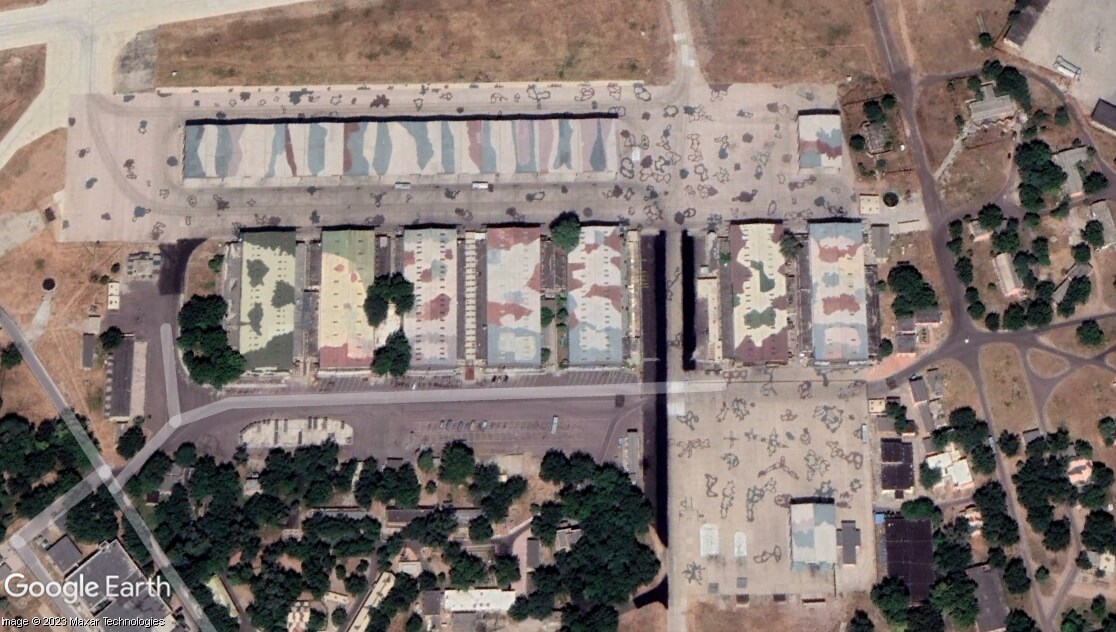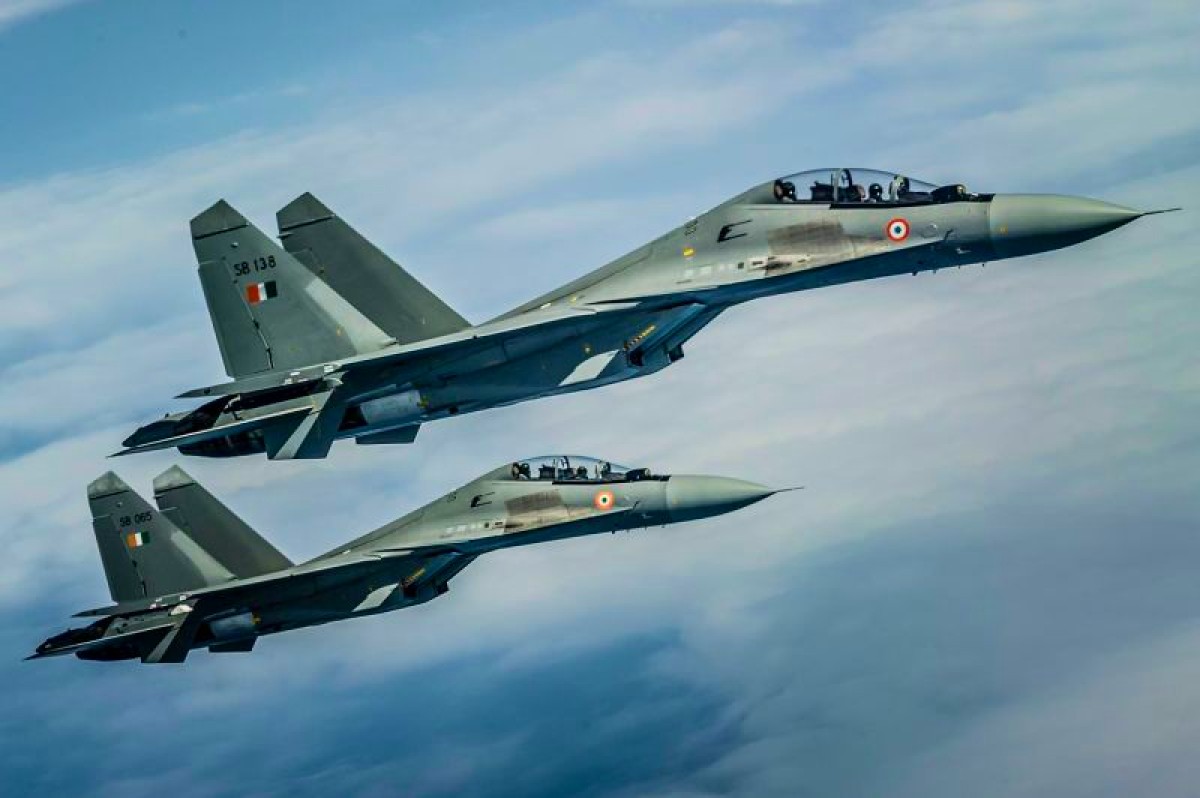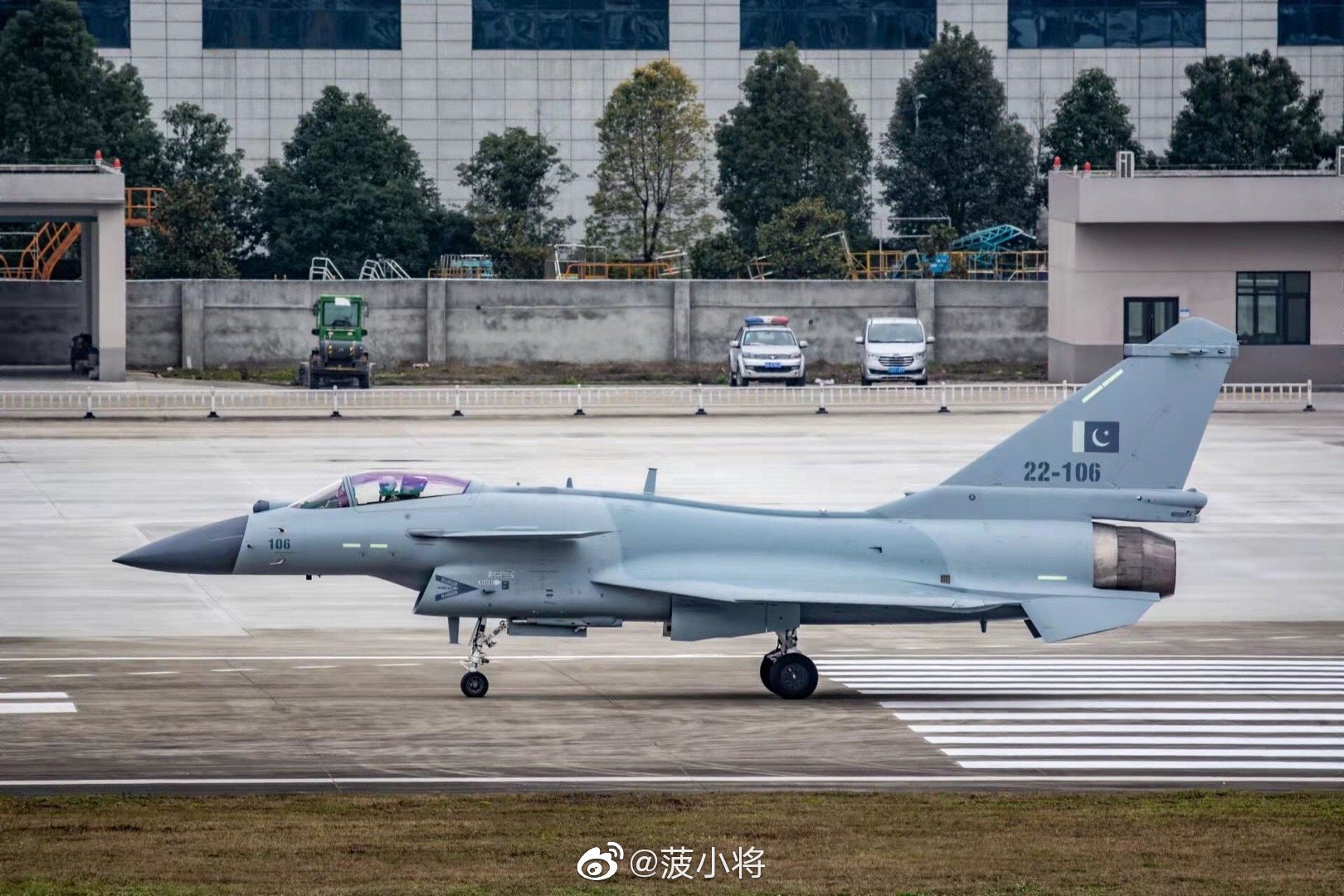Amid tensions with Pakistan, Indian Air Force has resorted to a new and unique form of camouflage at its Jodhpur Air Force Base in the Rajasthan sector.
A new set of satellite images that surfaced on social media through open source intelligence (OSINT) have revealed that India is using a new camouflage technique to protect the Jodhpur air base, located near the contested and volatile border with Pakistan.
The Jodhpur AFB is situated around 220 kilometers from the LoC.
The satellite imagery has revealed that the aircraft hangars, parking and taxiing areas, and runways at the Jodhpur Air Base have been painted with graffiti. The graffiti painting depicts objects of various shapes and sizes.
Military observers suggest this was done “to confuse enemy optics and pilots.”
It has been widely known that homing missiles with optical identification of enemy targets are increasing worldwide. These missiles essentially have a computer with the signatures of numerous pieces of enemy gear, including their visual characteristics. Once a target is identified, an attack command is automatically initiated.
This is where the disorienting pattern comes in to safeguard the aerial assets. The fact that this form of camouflage has been applied to the Jodhpur Air Force Base is telling. Even though there has been a stalemate in border tensions for a while, both sides have been tightening security.

On Air Force Day in October, the Indian Air Force unveiled a new digital camouflage uniform for its ground personnel. Before this, the ground personnel donned green uniforms that have now been replaced, and black t-shirts and brown boots have also been added.
For one, the camouflage measures at Jodhpur Air Force Base are significant as it is home to India’s workhorses, such as the Su-30MKI fighter jets. It also houses the Mi-17 chopper, the new Light Attack Helicopter Prachand, and the HAL Dhruv helicopter.
The Jodhpur AFB also hosts a battalion of the Indian Air Force’s special force, i.e., the Garud Commando.
Jodhpur AFB
Most importantly, this Indian base played a significant role in the Kargil War, fought between India and Pakistan in 1999. At the time, the MiG-27 fighter of the IAF played the role of an ace attacker. This aircraft was finally retired in December 2019.
It has also emerged as a new favorite for military drills involving foreign partners. Late last year, the Air Forces of India and France held five-day Garuda VII joint air drills at Jodhpur in which the Air Chiefs of both countries flew together in a sortie.
While Chief of the Air Staff Air Chief Marshal V R Chaudhari took a sortie in an Indian Air Force Rafale fighter jet, the French Air and Space Force Chief General Stéphane Mille flew in an IAF Su-30MKI.
India-Pakistan And Their Volatile Peace
Earlier this month, there were reports in Indian media that Pakistan had requested comprehensive satellite imagery of at least six frontline bases from China to understand what the Indian Air Force (IAF) is up to.
According to a report published, Pakistan recently requested information on 22 “targets” in India through SUPARCO, the Space and Upper Atmosphere Research Commission. SUPARCO has requested CNSA, or China National Space Administration, with which it has a ten-year agreement, to provide the satellite image.

China may provide satellite pictures to Pakistan under the Space Cooperation Outline Agreement agreed in 2021 between SUPARCO and CNSA. Pakistan has requested photographs with a resolution of less than one meter.
Further, according to recent reports, the Pakistan Air Force’s installation in Mirpur Khas in Sindh province is getting ready for a significant renovation since a fighter squadron might be relocated there. This may be a development that the Indian Air Force would keenly watch since it is located just 300 kilometers away from IAF facilities.
According to reports, the PAF has started “coating work” on the runway and taxiway at the base, which is already a forward operational post. This Pakistan Air Force base is currently only used for air defense, and moving a fighter jet squadron here permanently could affect the security calculus in India.

Ever since the aerial dogfight in 2019 in the aftermath of India’s Balakot strikes in Pakistan, the stakes for the air forces of both countries have mounted. Last year, the Pakistan Air Force (PAF) acquired the J-10C fighter jets from China to establish deterrence with India’s Rafale fighter jets.
It is also pertinent to note that New Delhi announced last year that it was deploying the S-400 air defense systems to guard along both its contested borders. Some reports in Indian media indicate that India’s new Pralay ballistic missile could be deployed along the border with Pakistan and China.
Even though China has emerged as a bigger threat to India since the clashes of 2020, the Indian military has not lost sight of its turbulent relationship with Pakistan and a twin threat posed by the China-Pakistan nexus.
- Contact the author at sakshi.tiwari9555 (at) gmail.com
- Follow EurAsian Times on Google News




